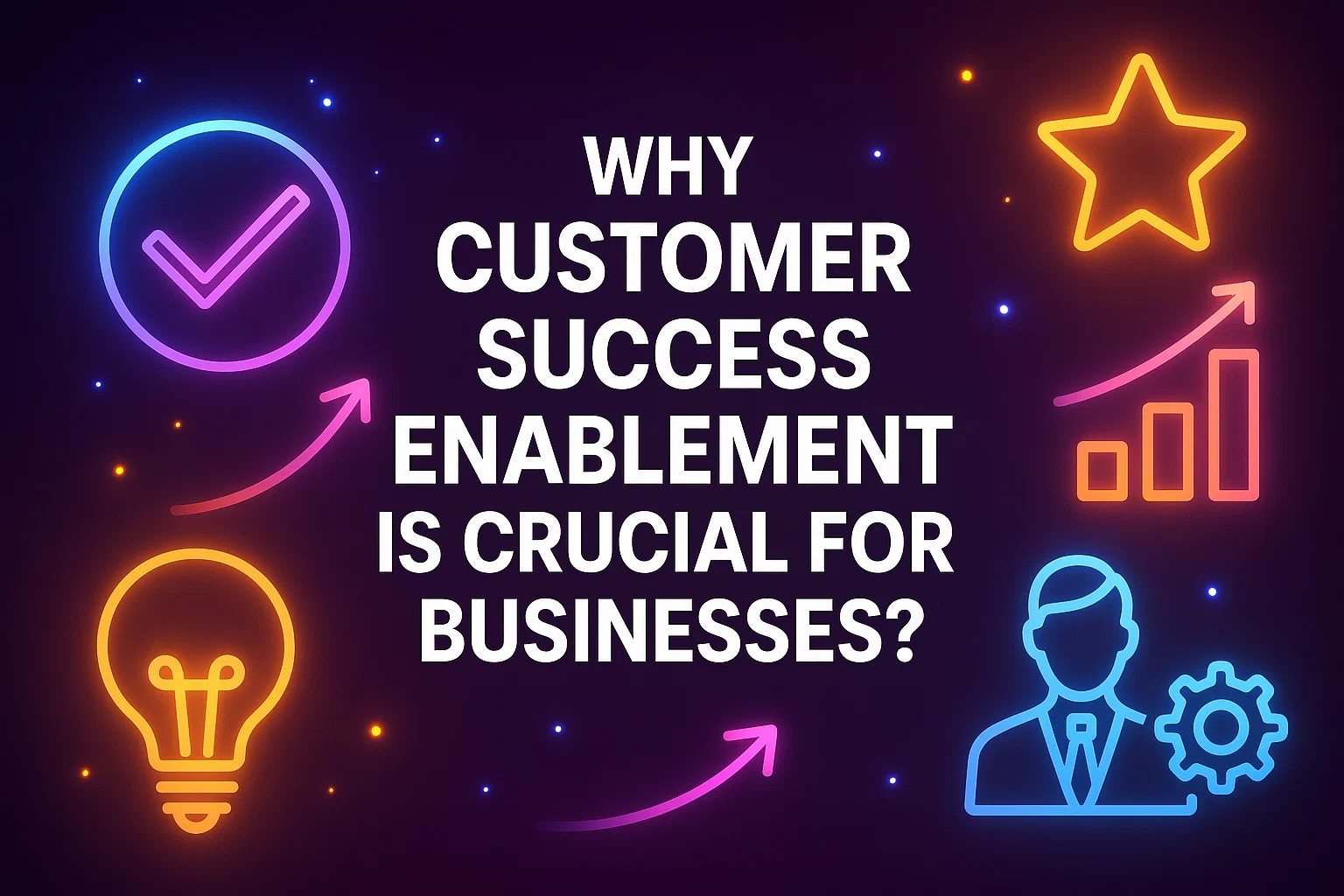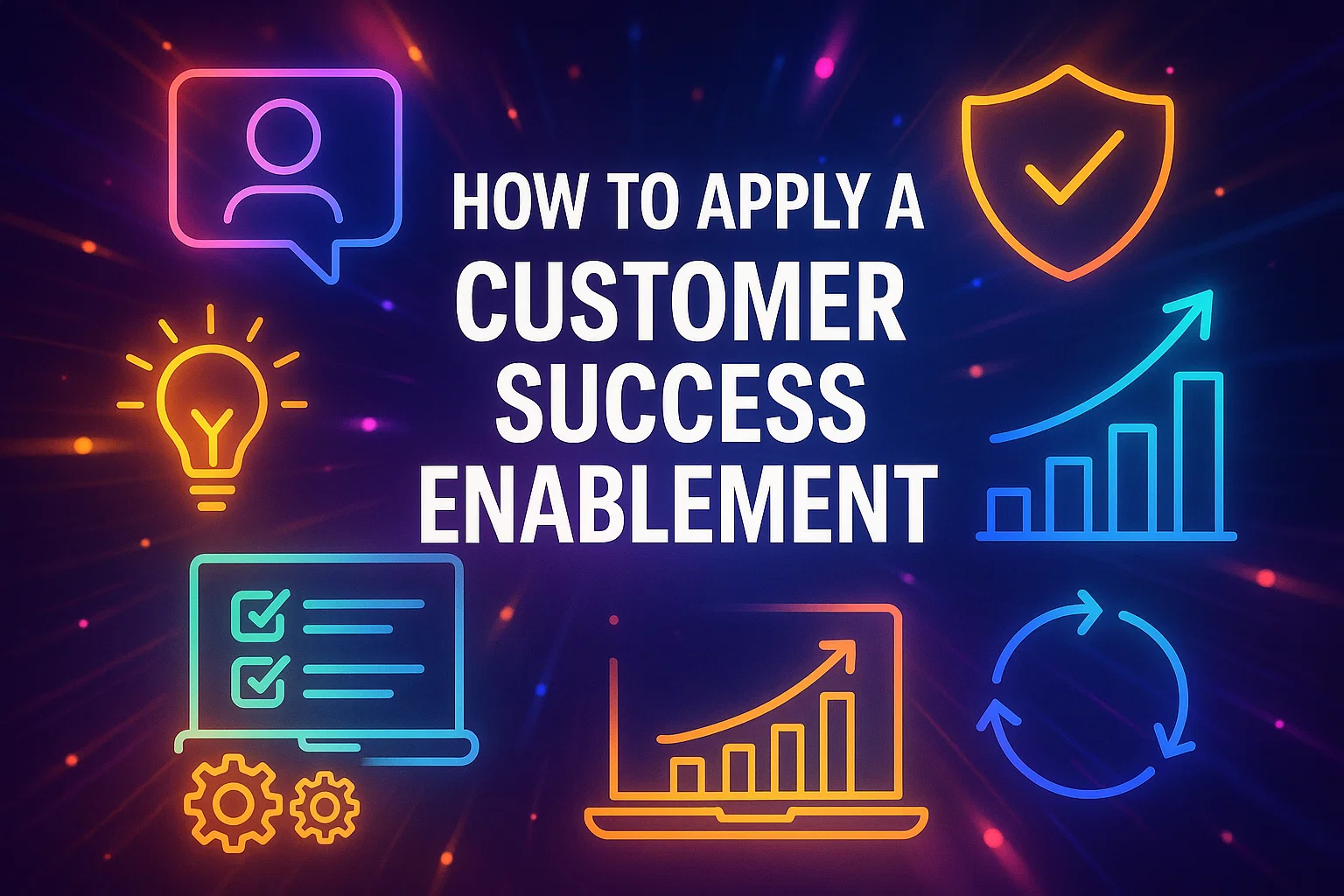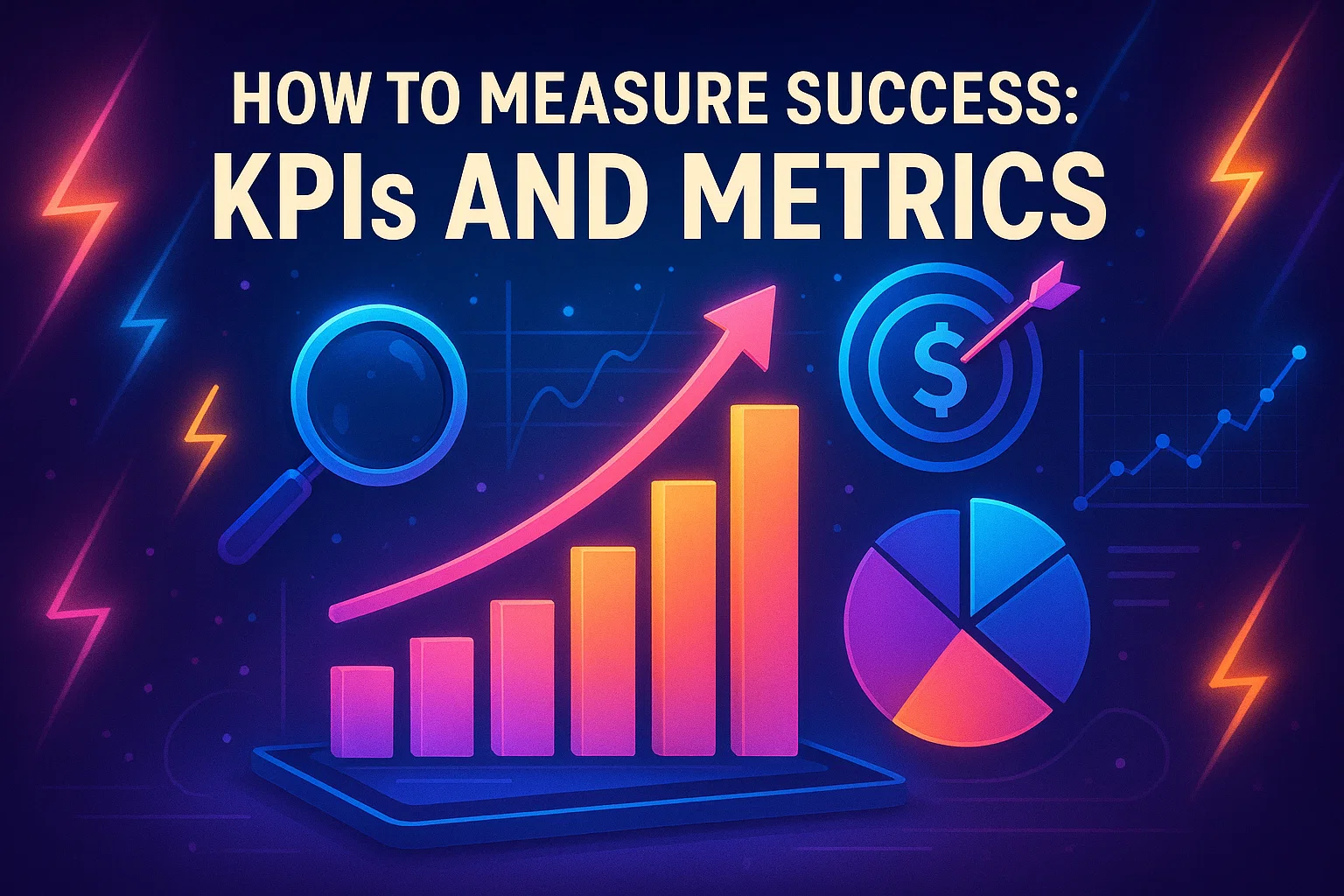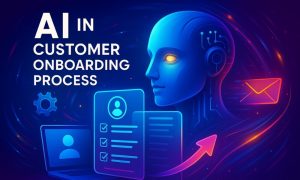Customer success enablement is a strategic approach that provides the customer success team and CS managers with the tools and resources to best support customers. With the right skills and knowledge about customer management, businesses can drive customer satisfaction, retention, and overall growth through this team.
Beyond just providing the best support for the customer base, customer success enablement ensures a long-lasting relationship with customers. It helps businesses to achieve the get the maximum value from the product or service that they’ve chosen.

Why Customer Success Enablement is Crucial for Businesses?
Customer success enablement is an essential factor for every business that wants to thrive in the competitive market. Retaining customers is now more valuable than acquiring new ones. With the right strategy, businesses can easily improve the retention rate and witness up to a 95% growth in their revenue stream.
In this process, teams are provided with the right resources and training they need to proactively address customer needs, reduce churn, and guide customers toward better outcomes. If everything goes well, it results in improved satisfaction, higher product adoption, and stronger long-term loyalty.
Customer success enablement also provides operational efficiency. With business growth, it ensures that every customer is getting the personalized and consistent support no matter what their needs are. In the long run, businesses can get predictable revenue, increase Customer Lifetime Value (CLV), and ultimately lower the churn rate.
How to apply a Customer Success Enablement
To implement the customer success enablement strategy, ensure your team gets the needed training and resources. It helps them to address customer needs and get the desired outcomes more effectively.
- Understand Customer Needs: All you need to do is first determine your customers’ goals, challenges, preferences, and expectations about your services and products. For instance, check out the surveys, feedback forms, and use the direct interviews. You can also look for the support ticket trends to track what features they’ve already used. Here you will also get the idea of related troubleshooting points.
- Set Clear Objectives: Next, set the right goals for your customer success plan. While doing so, you must focus on guiding your customers towards success and growing your business. Add your objects to some important metrics such as reducing churn, increasing customer satisfaction scores, or improving product success rate. Check and ensure each of your set goals is linked to performance indicators (KPIs). Then, assign the roles to your team to ensure everyone stays on track.
- Design and Optimize the Processes: In this step, you have to develop a well-proven process to manage customer relationships efficiently. For this, map out the customer journey from the initial stage, like from onboarding to renewals. Create clear workflows for how your team handles onboarding, support handoffs, and customer engagement. With the right planning, you can easily avoid delays and ensure customers are getting the best experience.
- Give the Right Tools with Training: Now it’s time to distribute the tools among your customer success teams. Give them access to CRM systems so that they can track customer information effectively. Provide ongoing product training to always be up-to-date on the latest features. Also, the team should follow clear communication tools to support customers, build strong relationships, and offer proactive help.
- Measure Success and Optimize: Customer success is the ongoing process. You need to ensure success at every stage to keep everything running well. For this, set up a system to monitor KPIs such as Net Promoter Score (NPS), customer retention, and product success rate. Review reports monthly or quarterly, and use the information to make decisions. Based on the customer insights, you can optimize your workflows and adjust goals to ensure continuous improvement.
Different Elements of Customer Success Enablement
- Onboarding & Training: First, you have to build a detailed onboarding program based on your customer’s unique use case. Use easy-to-follow tutorials, in-app guidance, and a helpful knowledge base. Keep your customer informed about your product and provide regular training. Through this, customers will always know how to use your product and ensure the best value from your offering.
- Customer Engagement Strategies: Set up proactive engagement strategies to get regular feedback from customers. For this, find the data from various touchpoints such as personalized email communication, in-app messages, and regular account reviews. Through actively listening to your customers, you can not only improve your service and product but also strengthen the trust of your customer base.
- Feedback Loops: You need to find out the effective resources to gather customer feedback continuously. You can check out the customer surveys, NPS polls, and one-on-one interviews. Use this data and identify the special customer concerns and expectations. This valuable approach will help you refine product features and improve customer interactions. You can easily reduce the churn rate and witness the next level of customer retention.
- Cross-Functional Collaboration: Make sure the customer success, product, sales, and marketing teams are working collaboratively and getting the desired outcomes. To better utilize the process, you can schedule regular meetings and discuss customer feedback, common pain points, and future needs. With such effective cross-functional team engagement, you can ensure a better overall experience for your customer from the first sale to ongoing support.
- Customer Health Scoring: Implement a customer health scoring model based on key usage metrics such as product adoption, support ticket frequency, and customer engagement. Regularly review these scores and identify at-risk customers and reach out to them earlier before they leave. Regularly monitoring your customer health scoring to predict churn and find effective opportunities to improve the customer retention rate.
Best Practices for Customer Success Enablement
Some of the best practices for a well-functioning customer success enablement include personalized offering, effective communication throughout the team, and establishing continuous feedback to maximize the effectiveness of the strategy.
- Clear and Consistent Communication: First, you have to define some special touchpoints through which your customer success team and other departments, like sales and product, communicate. It is important to ensure that the customer expectations are properly set and that teams better understanding of their needs.
- Customer-Centric Culture: Keep your customers at the top priority list. If it’s sales, product, or support, every team, everyone should work on ensuring the best customer value. A customer-focused approach helps teams to adjust strategies that can reduce churn, improve brand value, and create a better product suggestion for the customer base.
- Data-Driven Decisions: Use the data insights from customer interactions and behavior, and re-adjust your strategies. You can easily find the data from surveys, product use, and support tickets. The customer feedback and data analytics help track the progress and make necessary improvements more efficiently.
- Onboarding and Training: A well-structured onboarding program is a must for customer success. Give your team the needed tools, knowledge, and skills they need to ensure personalized training and support. According to research, personalized onboarding improves customer onboarding by up to 82%.
- Actively Problem Solving: It is always the best practice to address customer issues before they arise. Look for warning signs early. For instance, if any of the customers isn’t using an important feature or opens too many support tickets, it is better to reach them earlier before it becomes a bigger issue. Proactive engagement ensures customers feel supported and attended to by the support team throughout their customer journey.
- Continuous Improvement: Customer success is not static, and it is continuously changing with customer preferences. So better if you can regularly review your strategies and adjust them accordingly. If needed, update the tools and resources based on customer feedback, market trends, and team input.
- Cross-Functional Collaboration: A functional customer success enablement strategy does not stop with the one-step process. You need to ensure Sales, Marketing, Product, and Support teams collaborate closely with customer success. For instance, the product team communicates with the CS teams to make better product decisions, and sales teams can use the insights to better qualify leads.
- Building Relationships: An effective customer success enablement doesn’t just go beyond problem solving. Your team should work on creating long-term relationships with customers. This improves trust, loyalty, and helps turn your customer into real advocates.
Tools and Software used in Customer Success Enablement
To have a successful customer success enablement, use CRM systems, various onboarding and training tools, health scoring, feedback platforms, collaboration tools, and all-in-one platforms.
The right usage of these tools and software helps optimize your process, enhance customer interactions, and improve retention.
Customer Onboarding & Training Tools
When customers first approach the product, it’s better to guide them toward success. For instance, use tools such as WalkMe and Userpilot to guide new customers through product understanding. This overall reduces the frustration while using the special features and ensures a smooth onboarding experience.
Customer Health Scoring & Analytics
For customer health scoring, you can use tools like Totango and Gainsight, where you will get real-time insights into customer satisfaction. Through the insights from customer data, businesses can easily identify at-risk accounts and improve retention strategies.
Feedback & Survey Platforms
Businesses should gather customer feedback throughout their customer journeys. Various platforms such as Qualtrics and SurveyMonkey provide the best customer insights. Businesses can use them to improve services based on real user feedback.
Collaboration & Communication Tools
Effective teamwork is needed for customer success. For instance, teams can utilize various communication tools such as Slack and Microsoft Teams to improve their internal coordination. Make sure the sales, support, and customer success teams are communicating and working together.
All-in-One Customer Success Platforms
Use various all-in-one platforms such as ChurnZero and Zendesk to make your customer success process more efficient. They combine many important features into one system, and you can easily track their engagement at every stage. By automating the process, the customer success team will grow efficiently.
How to Measure Success: KPIs and Metrics
To ensure the effectiveness of your Customer Success Enablement program, track performance through some (KPIs) and metrics such as CRR, CSAT, NPS, CLV, FCR, and so on. These metrics provide valuable data on customer satisfaction, retention, and overall business growth.
- Customer Retention Rate (CRR):
With the CRR metric, you can measure how many customers continue to engage with your business over time. High retention rates signify an effective enablement strategy. With the lower rate, you need to readjust your strategies.
- Customer Satisfaction Score (CSAT):
CSAT is the best way to survey how a customer feels after a specific interaction. It may include a support call or product demo. The score helps your teams understand how the customer experienced and find out where your service, support, or product needs are meeting their expectations.
- Net Promoter Score (NPS):
It measures how loyal your customers are. The process is done with some simple questions, such as “How likely are you to recommend our product or service to others?” and customers will answer through a scale from 0 to 10. A high NPS signals strong customer relationships.
- Customer Health Score:
Customer health scoring is an important metric that helps to find out how well a customer is doing with your product or service. It combines various data points such as product usage, support interactions, and account activity. With a high score, you can rest assured that the customer is happy and likely to stay.
- Customer Lifetime Value (CLV):
CLV measures the total revenue generated from a customer throughout their relationship with your company. A higher CLV signals that all the processes are worth going and you can measure the long-term effectiveness of your customer success enablement strategy.
- First Contact Resolution (FCR):
It measures the percentage of customer issues that are actively attended to and resolved on the first contact. A high FCR means your CS team has the right knowledge and resources to solve problems quickly.
- Churn Rate:
It measures the percentage of customers who stop using your product or service over a specific period. A low churn rate means customers are staying, which often signals strong support, good onboarding, and real product value..
Common Mistakes and How to Avoid Them
When executing the Customer Success Enablement strategy, some of the common mistakes include failing to define goals, ignoring customer feedback, a lack of proper collaboration between teams, avoiding onboarding and training processes, and so on.
Get detailed insights on each one and how you can easily mitigate them:
Lack of Clear and Defined Goals
If you don’t have predefined goals, the overall customer success enablement strategy may fail even from the initial stage. As soon as you set clear objectives from the first, make sure they are perfectly aligned with your customers’ preferences. To make this easier, you can outline basic KPIs and track the progress.
Avoiding Customer Feedback
Customer feedback plays a big part in better understanding how well your approach is aligning with your customers’ needs. You will get a useful roadmap for improvement. With this, you gain insights about what your customers like or don’t like. To fix this, try to regularly attend to your customer feedback through surveys, interviews, or Net Promoter Scores (NPS). Use the data and refine your strategies and product offerings accordingly.
Improper Onboarding and Training Sessions
When you fail to provide a complete onboarding process or ongoing training, it can result in a poorly equipped customer success team. A proper onboarding system should clearly define roles, processes, and expectations for both the team and customers. Ensure your team gets regular training so they stay up-to-date on the latest tools, features, and best practices. This way, they can easily handle any arising challenges and ensure the best customer support.
Lack of Cross-Functional Collaboration
Customer success is not the responsibility of one department only. The sales, marketing, and product teams should work jointly. Without this, it can lead to confusion and poor experiences for customers. To fix this issue, create clear communication channels where your customer success team will regularly share information. This ensures everyone is on the same track.
Failure to Measure Success with KPIs
Without tracking performance, it’s hard to know if your customer success strategies are working or not. So, it is essential to regularly track performance metrics such as Customer Health Score, retention rates, and satisfaction levels. With these regularly updated, you can easily identify trends and make data-driven decisions that lead to continuous improvement.
Inconsistent Customer Engagement
If your customer success team fails to maintain consistent communication and engagement, it can lead to churn and missed opportunities for growth. Create an effective customer engagement plan that ensures your team reaches out to customers regularly, whether it’s through check-in emails, support tickets, or in-app messages. Through consistent engagement, your success team can ensure better retention with increased brand value.
Lack of Personalization
Many businesses make the common mistake in customer success engagement by treating all customers the same. Customization and personalization are important factors in improving customer loyalty and satisfaction. Adjust your services and communication to meet the individual needs of each customer, rather than using a generic approach.
Future Trends in Customer Success Enablement
As customer success strategies continue to grow, new trends and innovations are reshaping the way businesses approach enablement. Businesses always look ahead and find ways for efficient developments to drive the future of customer success:
AI and Automation Integration
The integration of AI and automation into customer success operations is transforming how businesses engage with customers. By leveraging AI tools, businesses can now automate repetitive tasks and gain actionable insights in real-time. This helps teams focus on high-value activities and ensure proactive customer management.
Personalized Customer Experiences
With customer expectations rising, businesses will increasingly use data-driven insights to offer highly personalized experiences. It ensures that each interaction and every touchpoint is relevant and meets the individual customer’s needs and preferences.
Remote and Digital Enablement Tools
The rapid shift to remote work has led businesses to use virtual tools to ensure positive customer engagement, no matter where they are. With the better usage of these tools, businesses can easily offer remote onboarding, training, and customer engagement, driving the best revenue growth.
Cross-Functional Collaboration via Technology
Customer success teams will continue to collaborate closely with marketing, sales, and product teams. They will share technologies and provide seamless communication with even the customer base as well. Through proper data sharing, businesses can give customers the best experience.
Customer Success as a Revenue Driver
Customer success is more than providing support when they need it. Companies are now realizing that keeping customers engaged drives revenue growth. In the future, companies will pay more attention to improving Customer Lifetime Value (CLV) and expand their offerings and features accordingly.
Conclusion
Overall, Customer Success Enablement is an important factor in building stronger, lasting customer relationships. By understanding customer needs, setting clear goals, and implementing customer-focused strategies, businesses can drive customer satisfaction and loyalty.
All you need to do is better utilize the right tools and focus on best practices to ensure success in the long run. Also, avoid the common mistakes we have stated above with the right resources. The best approach is to continuously monitor performance and refine the strategy.
Author
Shirikant is a proven customer success leader who combines sharp business insight with practical experience to improve retention and drive revenue. As the founder of Statwide, he designs customer-first business strategies that guide companies to turn users into loyal and long-term partners. His approaches are built on real results: stronger relationships, higher customer value, and lasting growth.










